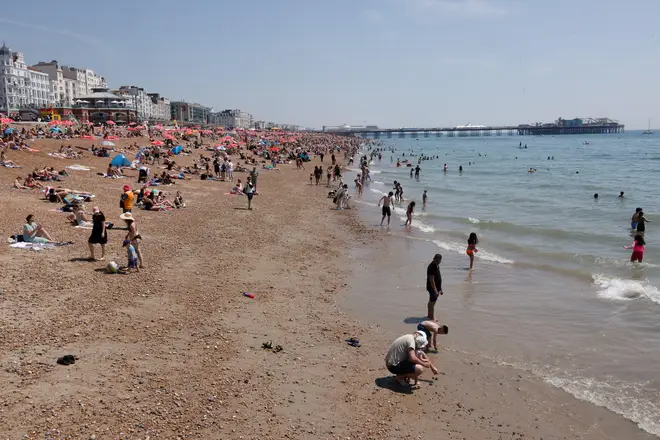
Carol Vorderman 4pm - 7pm
1 August 2023, 19:24

This July was one of the wettest on record, coming after the warmest-ever June.
This July, the sixth wettest since records began, was in sharp contrast to a year ago, which saw heatwaves and temperatures as high as 40C.
And a series of low pressure systems brought long periods of damp and windy weather to much of the country - while much of Europe was baking in 40C+ temperatures.
The average of 140.1mm rain last month was behind only 1988, 2009, 1936 and 1888 since records began in 1836.
Northern Ireland had an average of 185.4mm of rain last month, just above the previous record of 185.2mm set in July 1936.
Read more: Exact date 32C heatwave will hit UK signalling end to wet and windy summer

This figure could be revised once all rainfall data for July is collected and reviewed, the Met Office said.
It was provisionally the eighth wettest July on record in Scotland (an average of 155.1mm of rain), the tenth wettest in England (120.4mm) and the 11th wettest in Wales (176.7mm).
Some parts of England also set new rainfall records. Greater Manchester, Lancashire and Merseyside all saw their wettest July.
Lancashire was the wettest county compared to average, with 234.6mm of rain falling in the month.
Mike Kendon of the Met Office said: "It has been a significantly wet month for much of the UK, particularly for those in Northern Ireland.

"The jet stream has been shifted to the south of the UK for much of the month, simultaneously allowing extreme heat to build in southern Europe for a time, but also allowing a succession of low pressure systems to influence the UK, with long periods of winds and rain that many more typically associate with autumn weather."
July was slightly cooler than usual, with a mean temperature across the month of 14.9C, 0.3C below the average for the period 1991-2020.
By contrast, the previous month was the warmest UK June on record, with a mean temperature of 15.8C, 2.5C higher than average.
"Although July 2023 is considered to be a cooler-than-average July by current standards, for an early climate baseline of 1961-1990, if would have been considered a warmer-than-average July. This a tangible example of how we see the climate changing in our long-term data," Mr Kendon added.

Sam Larsen, director of programmes and planning at the industry body Water UK, said: "The recent wet and unsettled weather has helped river, reservoir and groundwater levels recover in much of the country.
"However, there are still areas in drought or that have experienced prolonged periods of dry weather, and climate change is changing the weather patterns that we all rely on for water."
Along with frequent rain, the UK experienced some strong winds in July, with a gust of 79mph recorded on July 15 at the exposed site of Needles on the Isle of Wight.
Gusts above 55mph were also recorded in Devon, Gwynedd and Northumberland.
The UK saw 81% of its average hours of sunshine for the month, while Wales and Northern Ireland both saw just 70%.